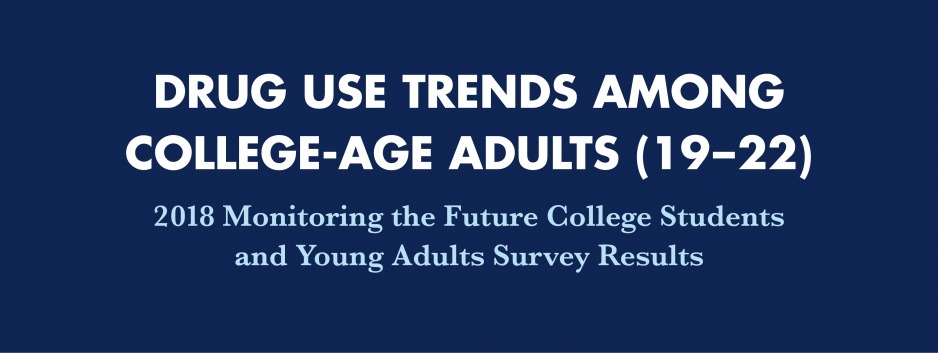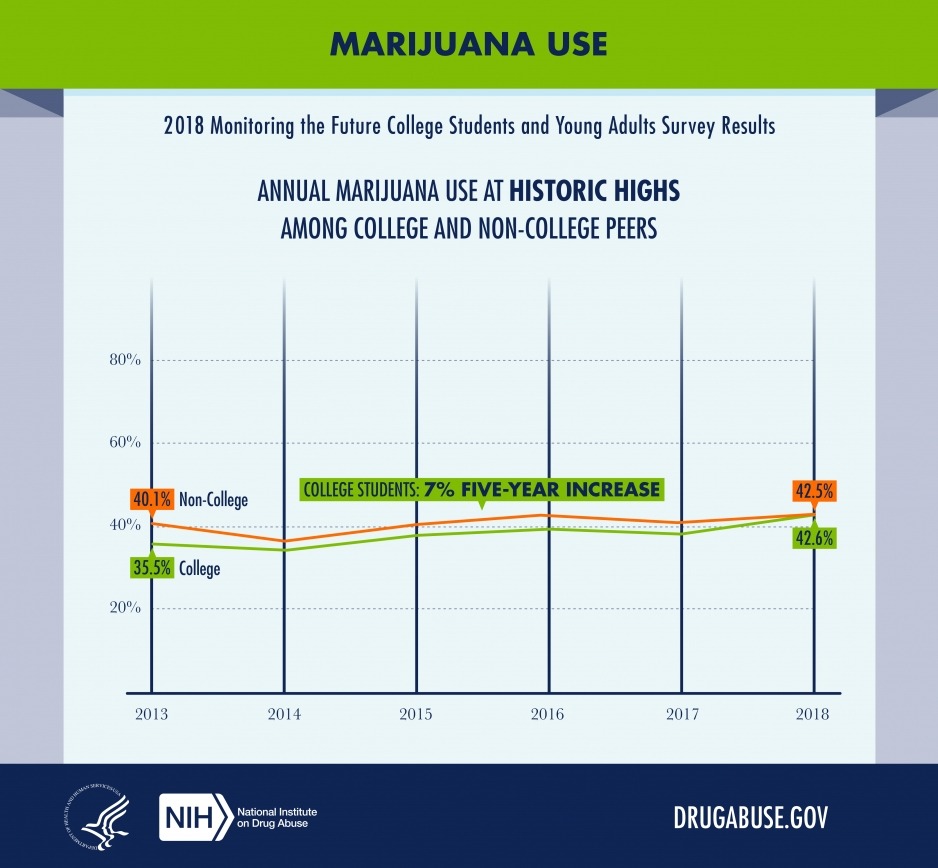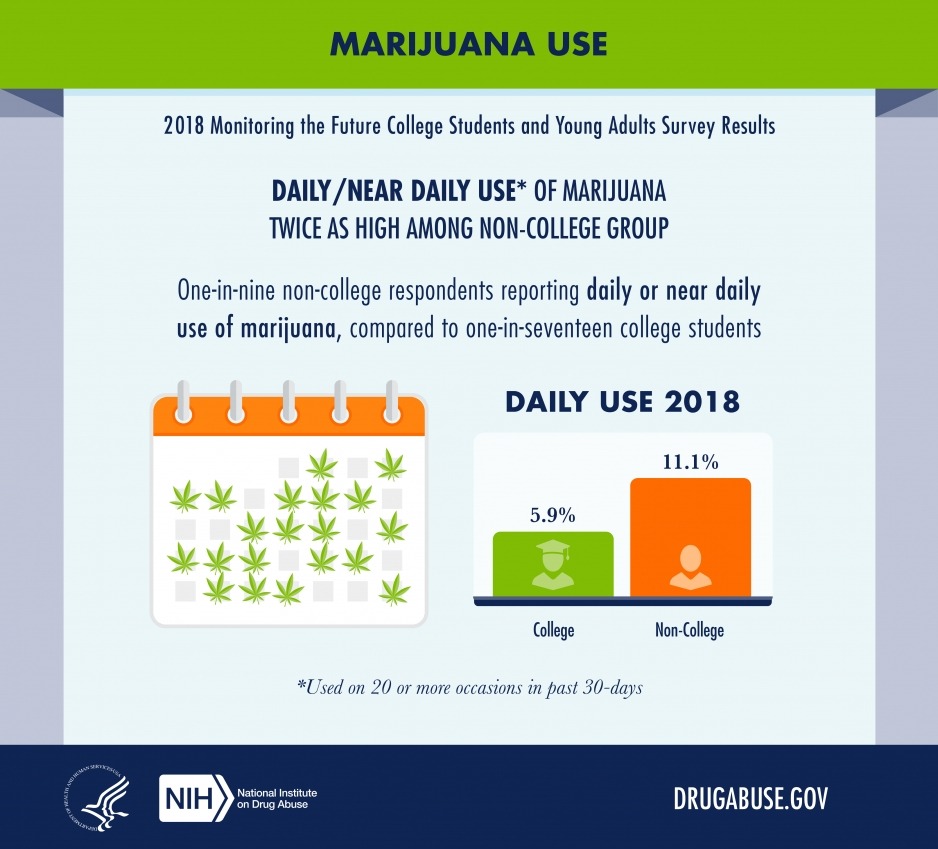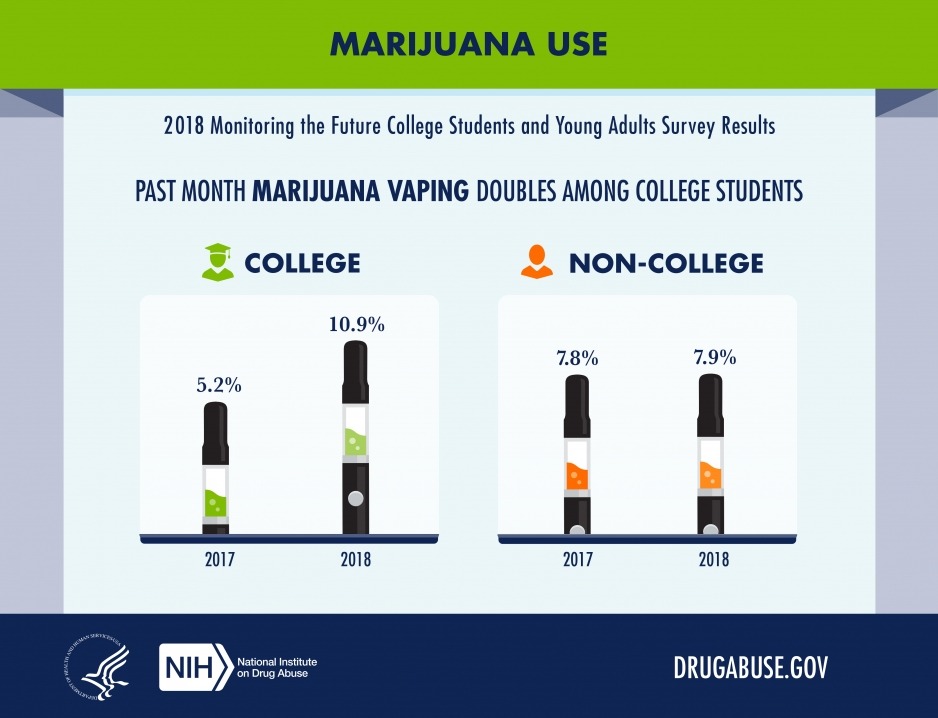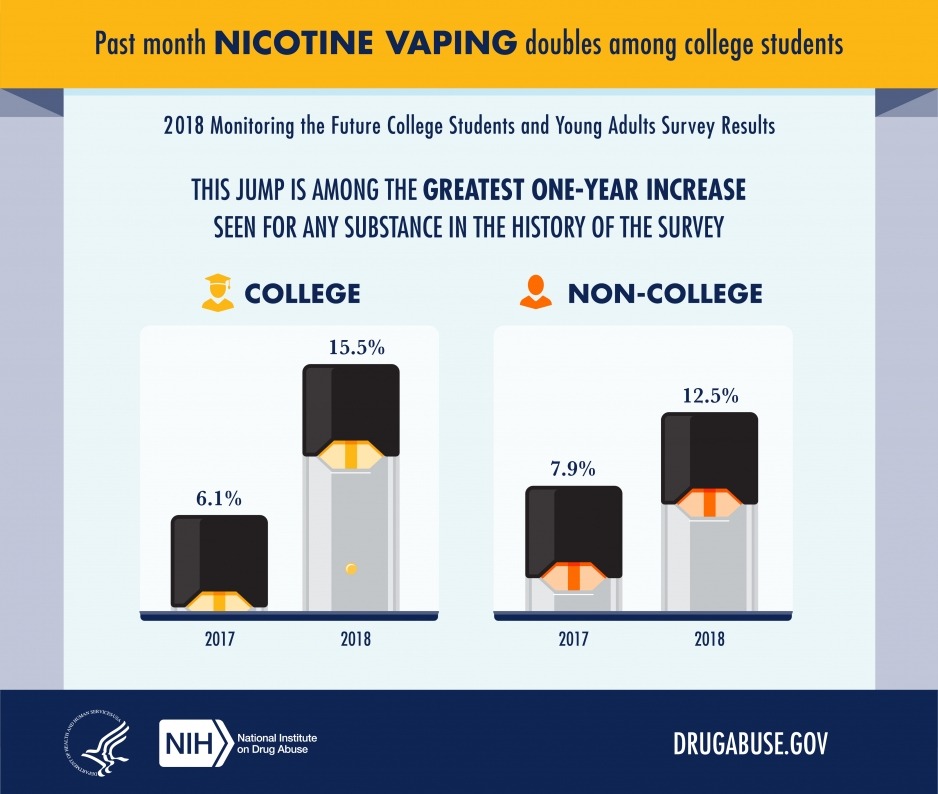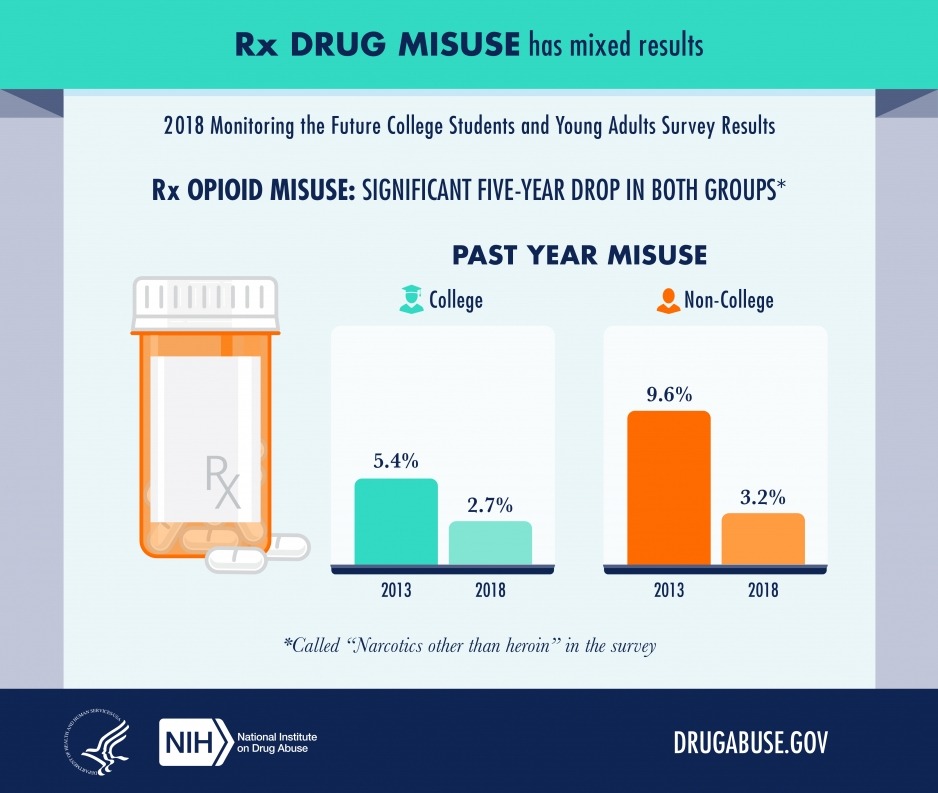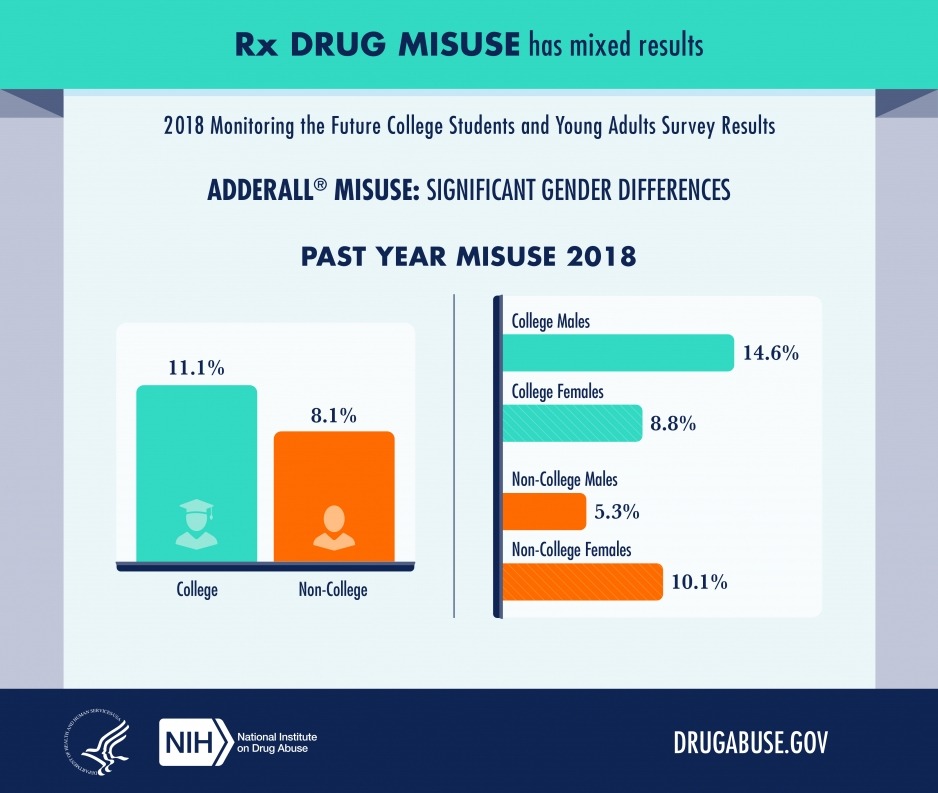The 2018 Monitoring the Future College Students and Young Adults survey shows trends in the use of marijuana, alcohol, nicotine, and synthetic drugs in college students and non-college peers.
Marijuana Use
Annual Marijuana Use at Historic Highs among College and Non-College Peers*
Marijuana use is nearly the same for college students and their non-college peers at about 43%. This is approximately a 7% increase over five-years for college students. These rates for both groups are the highest in 35 years.
Daily/Near Daily Use** of Marijuana Twice as High among Non-College Group
Approximately one in nine non-college respondents reporting daily or near daily use, (11.1%) compared to about one in 17 college students (5.9%).
** Used on 20 or more occasions in the past 30 days
Past Month Nicotine Vaping Doubles Among College Students
This jump is among the greatest one-year increase seen for any substance in the history of the survey.
Between 2017 and 2018, nicotine vaping increased in college students from 6.1% to 15.5% and from 7.9% to 12.5% in non-college adults.
Rx Drug Misuse has Mixed Results
Rx Opioid Misuse: Significant Five Year Drop in Both Groups
Past year misuse of prescriptions opioids dropped from 5.4% in 2013 to 2.7% among college students and from 9.6% in 2013 to 3.2% among non-college adults.
Adderall® Misuse: Significant Differences
Past year misuse rates of Adderall® were 14.6% among college men and 8.8% among college women. Rates were higher, however, in non-college women than in non-college men (10.1% and 5.3% respectively).
Overall Adderall® misuse is higher among college students (11.1%) than their non-college peers (8.1%)
Binge Drinking (five or more drinks in a row in the past two weeks) Fell Below 30% for the First Time among College Students
In 2018, binge drinking declined among college students (28%) and non-college adults (25%).
*Please note, the college-age adults are ages 19-22.
This publication is available for your use and may be reproduced in its entirety without permission from NIDA. Citation of the source is appreciated, using the following language: Source: National Institute on Drug Abuse; National Institutes of Health; U.S. Department of Health and Human Services.

